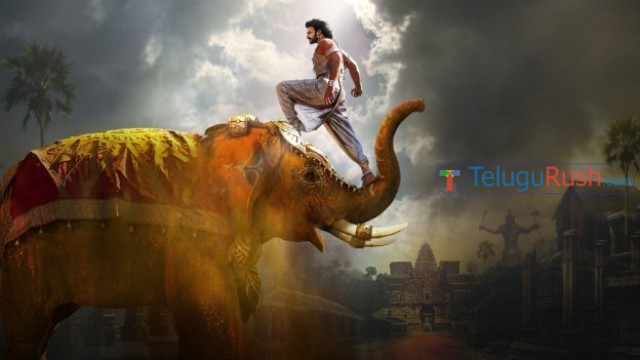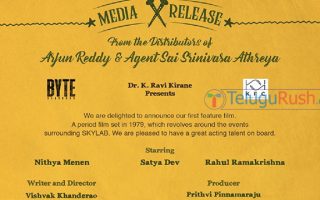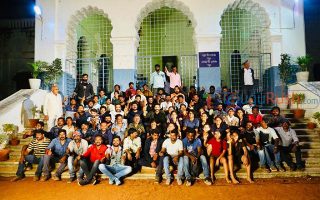Visual effects are being used in Indian cinema since the silent era. The folklore, mythology, and horror movies are incomplete without the visual effects. Although the present technology was not available at that time, earlier films have used some tricks and minor tweaks to produce amazing visual effects. The visual effects in Telugu movies have a long history and legacy.

Black and White Era
Kadiri Venkata Reddy (K V Reddy) is the pioneer of visual effects in Telugu cinema. He used trick photography and camera effects to produce great visuals. The classic Telugu film, ‘Pathala Bhairavi’, is one of the early Indian films to use extensive visual effects. Inspired by Sasirekha Parinayam from Mahabharata, he had made the magnum opus Mayabazar. The film took the visual effects of Indian cinema to great heights. Many contemporary directors were astonished by the splendid visual effects of the film. He collaborated with Anglo-Indian cinematographer Marcus Bartley for Mayabazar.
The laddu gobbling scene from the ‘Vivaha Bhojanambu’ raised many eyebrows. This one scene took 4 days to film and the entire song was shot using stop motion animation. They’ve made the laddoos fall into the plate from the location of Ghatotkacha’s wide-open mouth, then added the profile closeup of SV Ranga Rao’s wide-open mouth shot, and then it is reversed using the reverse shot technique to create the optical illusion of laddu gobbling. It is not a big deal at present using digital filmmaking and the technology available, but at that time they have done it all using the film.
Color Era
The color movies didn’t experiment much in visual effects as they used to rely on established techniques. B Vittalacharya is popular for folklore and is fondly called ‘Janapada Brahma’. He brought in many techniques for mind-blowing visual effects. His cult classic, ‘Jaganmohini’, is one of the milestones in the visual effects of Telugu cinema. The scene featuring the ghost cooking food with its legs in the fire was talked about for several decades.
Computer Graphics
Computer graphics have revolutionized the visual effects in films. They have broken the barriers of limitation and nowadays everything a Director is capable of imagining can be portrayed on screen given the tight budgets. Hollywood films have used computer graphics since the 1970s but it took a long time for Indian filmmakers to use them. Prasad Video Digital established India’s first Computer graphics facilities in the 1980s. Later Prasad EFX imported the first film scanners and recorders to India and pioneered the digital image revolution in India. Gentleman is the first Indian film to use computer graphics in India. The director, S Shankar, consistently brought in new technologies and techniques throughout his filmmaking career. Shankar used the computer graphics in Gentleman for a scene featuring a heart beating after a bomb blast. This had received critical applause from the audience.
The first Indian film to use complete computer graphics was the 1995 Telugu film Ammoru. It went on to become a blockbuster setting the trend of mythological fantasy films. The director, Kodi Ramakrishna, went on to make Devi, Devi Putrudu, and Devullu, which were all successful. Kodi Ramakrishna went on to direct the mythological fantasy thriller film, Anji, in 2004. It received critical acclaim and won a National award for its graphics. The audience and contemporary filmmakers appreciated the portrayal of Lord Shiva during the climax. Later, he made Arundhati in 2009, which became a blockbuster mainly because of its screenplay, performances, and graphics.
Present Generation
S S Rajamouli took VFX to international standards with his films. He started using computer graphics in Chatrapathi (2005). The audience criticized him for the poor-quality graphics at that time. He didn’t step back but continued to experiment in his next film, Yamadonga, which is a socio-fantasy film. It received critical acclaim for the visuals. His next project is a milestone in Telugu cinema, Magadheera (2009). It redefined the way graphics are perceived by the audience and is the first Telugu film with realistic computer graphics. The extensive usage of concept art and green mat generated CGI effects resulted in outstanding visuals. Although several other directors tried to recreate the magic of Magadheera, the visuals were not even close. Moreover, the film influenced many contemporary filmmakers to experiment with periodical and mythological films.
Rajamouli later made Eega with an impossible storyline and scenes beyond imagination. Eega brought international acclaim for the team and impressed the audience and critics alike. The next venture is an epic movie not just for Telugu cinema but for the entire Indian cinema, Baahubali. With India’s highest ever budget for visual effects and computer graphics, 6000 VFX artists from across the globe have collaborated to create the world of Mahishmati. It is not just a milestone for visual effects in Telugu movies but has surpassed the VFX (visual effects) of Bollywood movies. It is not an exaggeration to say that Baahubali brought an identity for Telugu cinema. Baahubali continued to impress the international audience with its release in other countries. Moreover, it has made Rajamouli the most sought-after filmmaker in India with many star heroes expressing their desire to work with him.
Conclusion
Apart from the films mentioned above, there are several other films that used computer graphics to narrate great stories. Nowadays every major film uses computer graphics to some extent. Moreover, the use of visual effects for songs and action scenes became a necessity. However, the technology has advanced to an extent that computer graphics are barely noticeable in current generation movies.




I would like to read your take on Guna Sekhar's films. He did use some graphics n the early age too. However, your general take on him is what i am interested to know.
I have written about Puri Jagannadh and Trivikram Srinivas. Will decode other directors soon.